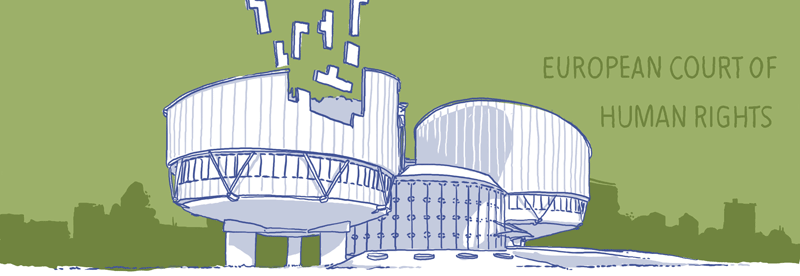
Hertie School professor instrumental in launching the European Implementation Network (EIN).
The European Implementation Network (EIN), co-founded by Başak Çali, Professor of International Law at the Hertie School, was launched on 2 December 2016. EIN is a non-governmental organisation established to connect NGOs, academics and practitioners working on the implementation of judgments of the European Court of Human Rights. Based in Strasbourg, EIN has partners in fifteen countries and growing.
In this interview, Başak Çali explains how EIN works and what it aims to achieve.
How did the idea for the European Implementation Network (EIN) come about and what does it aim to achieve?
Başak Çalı: Since its first judgment in 1960, the European Court of Human Rights (ECHR) has seen its jurisdiction expand to 47 countries and has received a significant number of applications alleging violations of the European Convention of Human Rights. Of a total of around 50,000 decisions the Court has delivered since 1960, it has found over 13,000 unique violations of articles of the Convention by its member states. The number of human rights violations judgments has increased steadily over the last two decades as the Council of Europe has expanded to include states in eastern and central Europe. But the number of violation judgments delivered has not been met with swift implementation back home. Implementation requires knowledge, capacity, time, resources and of course, political will. To fill this gap, non-governmental organisations (NGOs), human rights groups, research institutions and academics in many European countries have stepped in as advocates for the implementation of human rights judgments. The idea for EIN came about to enable advocates across Europe to join forces to highlight the problems of implementing judgments and to work together to ensure better implementation strategies. As a member of EIN’s founding steering committee, and as an academic who studies the processes of implementing human rights judgments, my role has been to highlight such common problems in Europe.
What are the main obstacles to implementing ECHR judgments?
Başak Çalı: According to statistics from the Committee of Ministers, the intergovernmental body charged with executing human rights judgments, there were over 10,000 such judgments awaiting implementation in Europe at the end of 2015. Two thirds of these cases raise repetitive, systematic or urgent issues. Implementation requires two types of action from states: to remedy the individual person who brought the case to the Court and to take measures to prevent future similar human rights violations. The former may require the state to give compensation to the individual or to reinstate their former status before the violation. The latter requires changes to laws, policies and case law of domestic courts that will prevent future violations. There are different kinds of obstacles. A state may have no political will to implement a human rights judgment, or if the issue is too controversial, elected leaders may delay implementation to appease voters. There are also capacity–related obstacles. States may be willing to implement the rulings, but they may lack the knowledge or capacity to do so. For some countries there are simply too many violation judgments. These may simply get lost and become ‘orphan’ judgments.
How will EIN improve the capacity of NGOs and civil society organisations to engage in this process?
Başak Çalı: NGOs play a number of roles in helping change this. They make the state authorities aware of human rights judgments and the need to implement them. They document continuing violations after a judgment is delivered and report them, fulfilling a monitoring mechanism. Or they make concrete proposals to governments to follow through on changing policies and laws. Sometimes laws need changing, but sometimes implementation is a matter of interpreting existing laws in light of human rights judgments. In the latter case, NGOs may help in raising awareness amongst judiciary about human rights law-based interpretation, or litigate cases domestically to change precedent. I have for over a decade been involved in trainings of judges and prosecutors in ECHR case law. The attitude change based on awareness of case law is a key aspect of implementing human rights judgments. With partners in over fifteen countries and expanding, EIN aims to connect NGOs, academics and practitioners working on the implementation of human rights judgments. The idea is to bring all this experience together under one umbrella and act as a hub of knowledge, best practices and advocacy. The latter is particularly important, as there is no NGO that advocates for the human rights judgments of Europe in Strasbourg, the home of the ECHR and the Committee of Ministers. EIN is not focused on one particular country, but it will share the resources and experiences from a number of countries to tackle issues in others. In the future, we plan to focus on implementation problems in thematic areas common to a number of countries, such as cases concerning LGBTI rights, protection of asylum seekers and migrants, or improving the rights of prisoners.
Learn more about the European Implementation Network by visiting the website: http://european-implementation.net/
You can also connect with EIN on Twitter: @EI_Network
More about Başak Çalı
-
Başak Çalı, Professor of International Law | Director, Centre for Fundamental Rights
